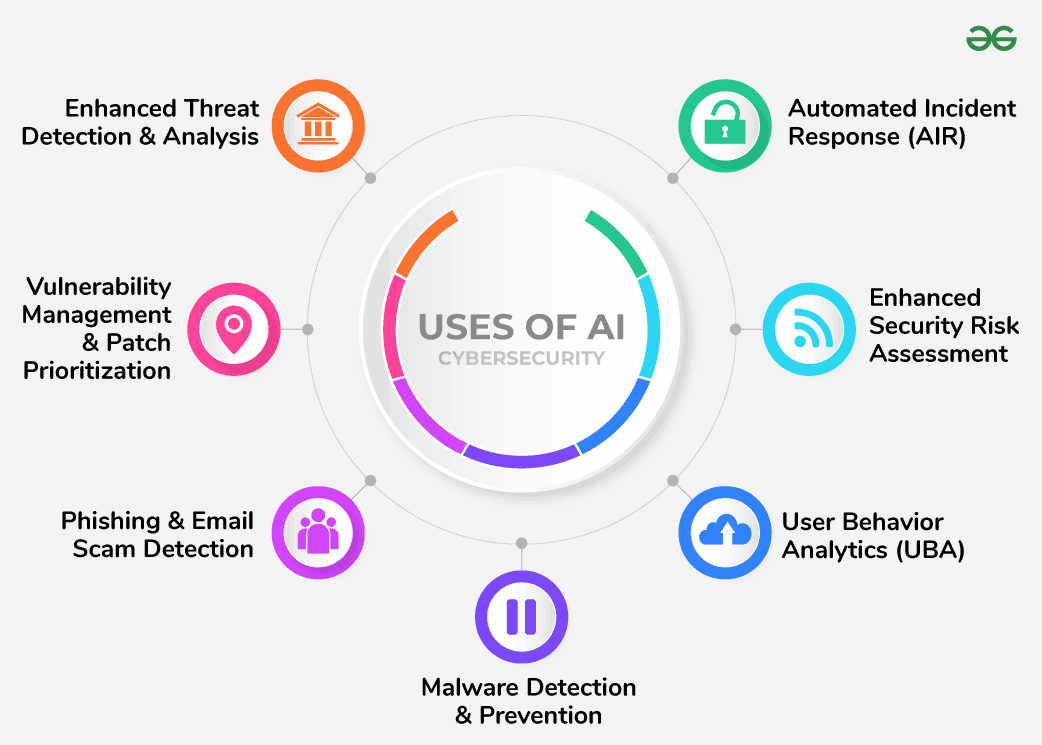Introduction
In an era where cyber threats are becoming increasingly sophisticated and frequent, the need for robust cyber defense mechanisms has never been more critical. Traditional methods of cybersecurity are often reactive and unable to keep pace with the rapid evolution of cyber-attacks. Enter Artificial Intelligence (AI) – a transformative technology poised to revolutionize cyber defense. AI's ability to analyze vast amounts of data, detect anomalies, and respond to threats in real-time offers a proactive approach to cybersecurity. This blog explores the role of AI in enhancing cyber defense mechanisms, delving into its advantages, benefits, use cases, and types, providing a comprehensive understanding of how AI is shaping the future of cybersecurity.
Advantages
Enhanced Threat Detection: AI excels at detecting threats that traditional methods might miss by analyzing patterns and behaviors across vast datasets. For instance, machine learning algorithms can identify anomalies that indicate potential security breaches.
Rapid Response: AI can automate response strategies, taking immediate action such as isolating affected systems and blocking malicious IP addresses, reducing the spread of malware.
Continuous Learning: AI systems can adapt to new and emerging threats faster than traditional systems, ensuring that defense mechanisms remain effective over time.
Scalability: AI can handle and analyze large volumes of data at speeds far beyond human capabilities, making it ideal for organizations with extensive IT infrastructures.
Efficiency: By automating repetitive tasks, AI frees up human resources for more strategic cybersecurity initiatives, such as developing comprehensive security policies and threat hunting exercises.

Benefits
Proactive Defense: AI's predictive capabilities enable organizations to anticipate and prepare for potential cyber threats by analyzing historical data and identifying trends.
Resource Optimization: AI can lead to more efficient use of resources, reducing the need for extensive human intervention and allowing cybersecurity professionals to focus on complex tasks.
Cost Savings: Automating threat detection and response can significantly reduce the costs associated with data breaches, including legal fees, regulatory fines, and reputational damage.
Improved Accuracy: AI's ability to process and analyze data in real-time enhances the accuracy of threat detection, reducing false positives and ensuring that genuine threats are identified and mitigated.
Enhanced Security Posture: By continuously monitoring and analyzing network traffic, AI helps maintain the integrity and security of the network, providing a robust defense against a wide range of cyber threats.

Use Cases
Network Security: AI is widely used in network security to monitor and analyze traffic for signs of malicious activity. For example, Cisco's AI-driven security solutions use machine learning to detect and block threats in real-time.
Endpoint Protection: AI enhances endpoint protection by monitoring devices for signs of compromise. Solutions like CrowdStrike use AI to analyze device behavior and detect malware and ransomware.
Threat Intelligence: AI analyzes threat intelligence data to identify emerging threats and vulnerabilities, helping organizations stay ahead of potential cyber-attacks.
Fraud Detection: AI systems can detect fraudulent transactions by analyzing patterns and identifying anomalies, protecting financial institutions and their customers.
Phishing Prevention: AI-powered email filters use natural language processing (NLP) to identify suspicious language patterns and flag potential phishing attempts, protecting users from social engineering attacks.

Types
Machine Learning (ML): ML algorithms learn from historical data to identify patterns and predict future behavior, enhancing the accuracy of threat detection and response.
Natural Language Processing (NLP): NLP analyzes and understands human language, enabling the detection of phishing emails, fraudulent messages, and other text-based threats.
Behavioral Analytics: This type of AI monitors user behavior to detect anomalies that may indicate a security breach, such as unusual login attempts or data access patterns.
Automated Response Systems: These systems use AI to automate threat response strategies, taking immediate action when a threat is detected.
Predictive Analytics: AI uses predictive analytics to forecast likely attack vectors and recommend preventative measures, helping organizations strengthen their defenses before an attack occurs.
Conclusion
AI is playing a transformative role in enhancing cyber defense mechanisms, offering unprecedented capabilities in threat detection, response automation, and predictive analytics. By leveraging AI, organizations can stay ahead of cyber threats, ensuring robust and proactive security measures. As AI continues to evolve, its integration into cybersecurity strategies will become increasingly vital, enabling organizations to protect their assets and maintain trust in an increasingly digital world. The future of cybersecurity lies in the seamless collaboration between human expertise and AI, creating a resilient defense against ever-evolving cyber threats.
